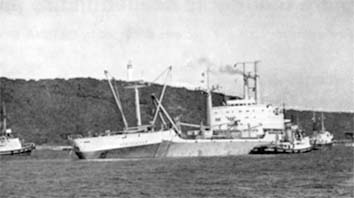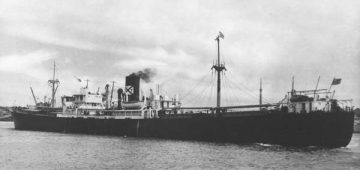The following are letters to the Editor published in the December 2014 issue.
From: Robin Burnett, Alfriston

It was good to see an article on the Ben Line Steamers in the August 2014 issue. These ships were particularly admired by those at sea for their distinctive appearance, not least the quality wood-grain effect painted steel panels of the accommodation.
I noted in particular the brief reference to the 12,902grt cargo ship Bencruachan, built on the Clyde in 1968, along with a photo of that ship, although she was not always so pristine in appearance.
In 1973 this ship drew worldwide attention to the dangers of freak waves when she was severely damaged while steaming into head seas and running before the Agulhas current (which can be 4-5 knots) south east of Durban. At the time, as editor of The Naval Architect and because of RINA’s concern over weather damage and the structural integrity of hulls, I took note of the details of the damage, weather conditions and oceanographic data.

In the early hours of 3rd May 1973, the 542ft Bencruachan was steering a course of 236 deg at 20 knots with an even draught of about 30ft. She was described in the ship’s log as rolling moderately, occasionally pitching heavily, and spraying overall in rough head seas, moderate to heavy SW swell with wind SW force 7.
At 0240hrs (SAST) according to the OOW she appeared to ’hit a solid mass’. The ship instantly lost way as a result of striking the freak wave. The whole 120ft long bow section to the break of the forecastle was bent down by 7 deg, side plating was compression buckled and opened to the sea in several places and all four decks and associated girders severely buckled abaft the bulkhead between Nos. 1 & 2 holds. The forecastle was awash, bulwarks abreast Nos. 1 & 2 hatches were carried away, No. 1 hatch coaming crushed and No. 2 hold flooded. Two deck containers were lost overboard and derricks were broken adrift, while the steel ladder on the foremast was twisted to a height of 40ft above deck.
Although there were no casualties the ship was in grave danger of breaking up and sinking but was almost certainly saved by the watertight bulkheads of the bunker tanks between the flooded No. 2 hold and No. 3 hold. Engine speed was reduced from 92rpm to 60rpm but attempts to turn the Bencruachan stern to wind failed and the engines were finally stopped at 0755. At 1300 a Dutch tug, Marjan III, took her in tow, stern first to Durban where she arrived at 1500 on 4th May, by then drawing 60ft forward and 27ft aft. After stabilising and temporary repairs in Durban the Benchruachan proceeded to Rotterdam where the bow and corrugated plating were cut off, and a new section was welded to the hull. The total cost of repairs amounted to about £1 million.
It was later concluded that freak, abnormal or rogue waves, as they may be called, can occur when the sinusoidal curves of different wave and swell trains become in-phase and these waves get much steeper when the wind is opposing a strong current, which in turn is effected by the topography of the continental shelf. It was also concluded that rogue waves were far more common than previously thought by the scientific community.
Long, heavily laden bulk carriers, are particularly vulnerable. The prime example of this was the 294m Derbyshire, the largest British registered ship ever to be lost at sea, sunk in 1980 with all hands in a typhoon off Japan. In 1997 the International Maritime Organization adopted new rules covering structural requirements for the survivability of bulk carriers upwards of 150m long, requiring double bottoms and bulkheads to be strong enough to withstand flooding of a hold. My book ‘Water under the Keel’ includes, on page 110, a photo of the Bencruachan (above), with her clearly bent bow section, under tow to Durban.

Sign-up today to read the full article!
Simply click below to sign-up and read the full article, as well as many others, instantly!





Comments
Sorry, comments are closed for this item